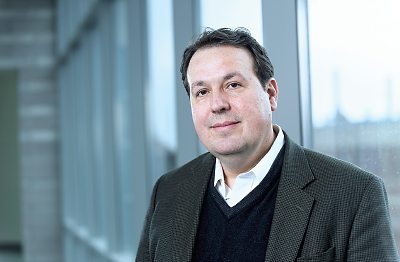Recent Rise in Youth on Antipsychotics Raises Concerns Among Experts
Abstract
The majority of surveyed physicians followed best-practice guidelines for prescribing medications, but half of them failed to perform recommended metabolic monitoring.
With antipsychotic use among children on the rise, clinician scientists from the University of Vermont Medical Center wanted to know why.

David Rettew, M.D., says that he is not against the use of antipsychotics in children; he just wants to ensure that the medications are being prescribed properly.
Last month, David Rettew, M.D., director of its Pediatric Psychiatry Clinic, and colleagues led a study investigating the clinical decision-making process of some Vermont health care professionals who have prescribed antipsychotics to youth younger than age 18.
“There are risks associated with using these medicines,” stated Rettew. “[And] at the same time, they have saved lives.”
Over the past decade, several studies have shown a sharp rise in antipsychotic use among children and adolescents, both Medicaid-insured and privately insured, noted Rettew and his research team. According to the Agency for Healthcare Research and Quality, antipsychotic drug use jumped more than 60 percent among youth on Medicaid between 2002 and 2007—with antipsychotic drug use prevalent in 2.4 percent of all youth on Medicaid.
Rettew and collaborators noted concerns of whether the increase in antipsychotic use by children and adolescents is due to an overuse of this drug class and whether these youngsters are being prescribed the correct medications at the proper time of treatment in accordance with best-practice recommendations outlined by the American Academy of Child and Adolescent Psychiatry (AACAP) and clinical indications from the Food and Drug Administration.
AACAP advises that children and adolescents who have not received a diagnosis for a serious mental illness such as schizophrenia but present with other types of behavioral problems, such as aggression or eating disorders, should receive treatment with antipsychotics only after other medications or nonpharmacological therapies have been deemed ineffective.
Rettew to Present in Toronto
David Rettew, M.D., will discuss “Positive Child Psychiatry: Application for Practice and Education” at APA’s 2015 annual meeting in the symposium “Positive Psychiatry Across the Lifespan.” The symposium, chaired by former APA President Dilip Jeste, M.D., will be held Monday, May 18, 2 p.m. to 5 p.m. in Room 718-B, Level 700, South Building, Toronto Convention Center.
“Part of our concern,” said Rettew, “is that these medicines may be getting pulled out too early in the treatment planning for things like oppositional behavior, ahead of things like behavioral therapy that could be tried first.”
To address their concerns, the researchers surveyed 147 prescribers who issued at least one antipsychotic medication for a Medicaid-insured youth aged 18 and under in Vermont between July 2012 and October 2012. Questions focused on the indication for the antipsychotic, the specialty of the prescriber, prior use of other pharmacologic and nonpharmacologic interventions, and metabolic monitoring.
Their results, published in Pediatrics, showed that 92 percent of the time surveyed physicians followed best-practice guidelines for clinical indication for prescribing an antipsychotic in a patient younger than age 18, with psychiatrists statistically more likely to adhere to these best practices than nonpsychiatrists. Antipsychotic medications were typically used as a secondary intervention for mental health conditions such as aggression and mood instability after other pharmacologic and nonpharmacologic treatments were ineffective, although previous treatment with cognitive-behavioral therapy was uncommon—used in only 16 percent of the cases.
The results also showed, however, that almost half of the physicians veered from metabolic monitoring, which is recommended by AACAP due to elevated risk for the development of diabetes and hypercholesterolemia in individuals taking antipsychotic medications. The most prescribed antipsychotics in the study population were risperidone, quetiapine, and aripiprazole.
Because the study findings showed possible reasons for concern about patterns of antipsychotic prescribing among physicians who have treated children and adolescents, Rettew and colleagues proposed the following initiatives that could help physicians adhere to best-practice guidelines:
Use of electronic medical records to remind doctors of the necessary bloodwork.
Increased access to evidence-based therapies that can help alleviate patients’ anxiety, depression, and oppositional behavior.
Better training and consultation for doctors who don’t initially prescribe the medicine but are responsible for monitoring patients who are now taking it.
Improved access to medical information across centers so that physicians who prescribe the medications know the history of the patient’s treatment.
The study was funded by the Department of Vermont Health Access and the Vermont Child Health Improvement Program. ■
An abstract of “Antipsychotic Medication Prescribing in Children Enrolled in Medicaid” can be accessed here.



